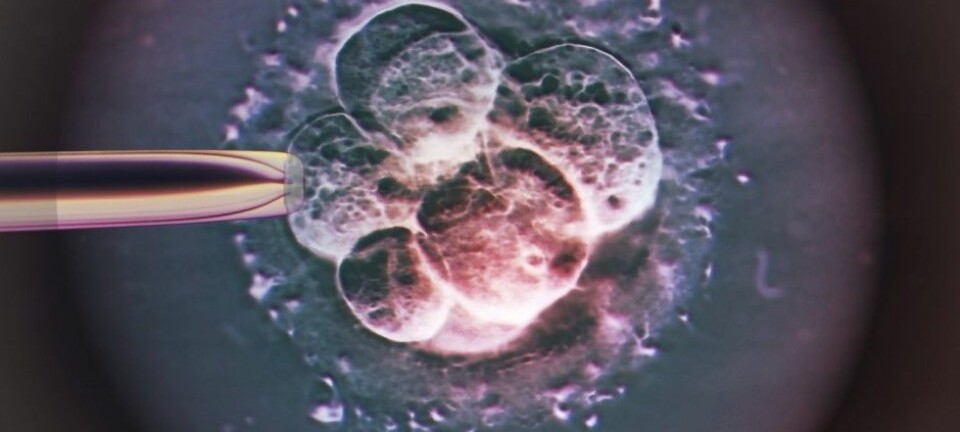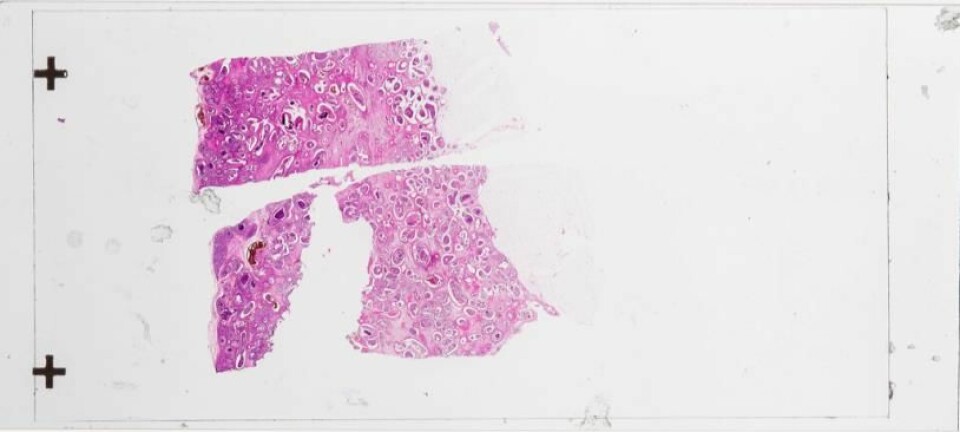
Scientists discover enzyme that allows cancer to spread into bone
Slowing down the enzyme's effect prolongs the lives of patients, indicates the new study.
Each year around 4,000 Danish women develop breast cancer. Many are cured, but for some people, the cancer spreads to other organs. Once the cancer has spread, it becomes a chronic disease and is incurable.
Now, Danish and British scientists have discovered how the severe type of breast cancer known as oestrogen receptor negative spreads to the bones. Their study shows that cancer can spread to the bones when the tumour in the breast sends a special enzyme into the body.
"The cancer cells in an oestrogen-receptor-negative tumour emit an enzyme called Lysyl oxidase (LOX). The higher the level of LOX, which is secreted by the tumour, the greater is the risk of the cancer spreading to the bones, "says Janine Erler, research leader at the Biotech Research and Innovation Centre at The University of Copenhagen, Denmark.
According to Erler, the LOX enzyme activates bone-degrading cells in the body which create holes in the bones, allowing the cancer cells to penetrate.
The bones are destroyed before metastasis
Erler and colleagues discovered the LOX enzyme while conducting a number of studies of breast cancer tumours. Their findings have just been published in the internationally renowned scientific journal Nature.
Their experiments show that breast tumours send enzymes into the blood when they do not get enough oxygen.
In particular, the oestrogen receptor negative type of breast cancer activates the LOX enzyme and bone-degrading cells which can produce holes in bone tissue.
The holes allow for cancer cells circulating in the bloodstream to penetrate into the bone where they begin to grow. So it is not the cancer cells that destroy the bone as it is already damaged.
Cells with LOX is bone-depleting
Erler and colleagues decided to test whether breast tumours contain and secrete a bone-degrading substance after they observed that the bones of patients with advanced breast cancer had already been destroyed before the cancer cells had penetrated them.
"We’d noticed that there were holes in the bones in patients with advanced oestrogen receptor negative breast cancer even before cancer cells had spread to them. This led to the hypothesis that breast cancer tumours send signals to the body which then degrade the bone,” said Erler.
Erler’s team investigated the substances that were secreted by the tumour and found that LOX is one of the primary enzymes to be present in patients with degraded bones.
They then designed laboratory experiments to test whether the LOX enzyme activates bone-degrading cells. The results revealed the enzyme’s role.
“We saw that the cells with the added enzyme did indeed turn into bone-degrading cells," says Erler.
Cancer Researcher: It is an important discovery
The discovery of the LOX enzyme function is important, says another cancer researcher who has not been involved in the study but has read the scientific article.
"It looks very promising," says Henrik Ditzel, who studies breast cancer and is a professor and chief physician at the University of Southern Denmark, Odense University Hospital.
Scientists have theorised about special biological microenvironments for a long time, he says. These are the places in the body where the tumour cells can penetrate and allow the tumour to spread.
The existence of these is now confirmed by the new study, says Ditzel.
Bone Environment changes before cancer spreads
Scientists are not sure what it is that alters this microenvironment around the enzyme first. It could be the local spread of cancerous cells affects the microenvironment and allows the cancer to take hold in several places in the body. Or it may be that signals sent from the primary tumour alters the microenvironment, allowing the cancer to spread.
"The new findings suggest that it’s the latter in this case because the environment in the bone changes before the cancer spreads. This occurs because the primary tumour secretes the LOX enzyme which circulates around the body," says Ditzel.
"It’s an important discovery because the need to prevent the disease spreading is central to the fight against breast cancer. A tumour in the breast can be operated on but if breast cancer cells spread and take root elsewhere in the body, we can no longer cure the patients. Instead, we are limited to prolonging their survival. The hope is that we can develop drugs that protect the microenvironment in healthy tissue so the cancer cells are less able to spread," he says.
Findings could lead to treatment options
In the long term, the new findings have profound implications for patients with advanced oestrogen receptor negative breast cancer. New treatments could be developed to halt the effect of the LOX enzyme in patients with high levels of it.
This would protect the bone tissue from degradation and prevent the spread of cancer, says Erler. The results would be patients who live longer and with a higher quality of life.
She sees opportunities for drug bisphosphonates that doctors already use to slow the process of bone destruction in patients with osteoporosis. According to Erler, this could also be used in patients with advanced breast cancer.
"The drug blocks the activity of bone-degrading cells. It would be an idea to treat breast cancer patients who have high levels of LOX-tumour with these bisphosphonates in order to prevent the cancer spreading. But this requires clinical trials first," says Erler.
--------------
Read the Danish version of this article on Videnskab.dk
Translated by: Catherine Jex











